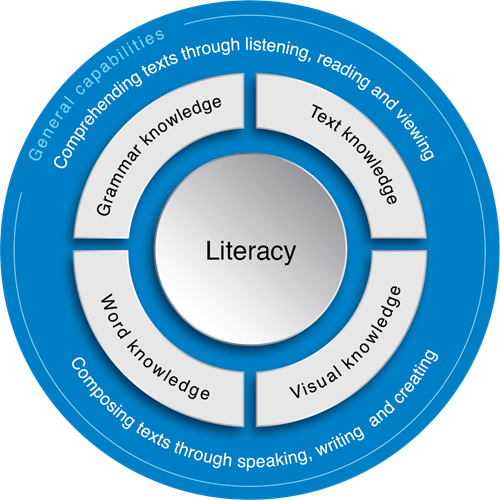The library collection is constantly expanding and the Teacher Librarian (TL) has the important role of managing all the resources in the library collection. Continually maintaining this collection is an immense task, as each library resource can be viewed in multiple formats. This means that as technology is continually being improved, school libraries are able to focus on different areas of the curriculum either being accessed in a digital format or accessed online. Throughout this subject I have learnt that the school library has become a central hub of information that staff and students can access and interact with during research based learning. Processing each resource can be quite a time consuming task and even though it takes a while, checking the copyright of these resources is extremely important (Johnson, 2009). This results in resources being verified both for their quality and relevance in the library collection. An example of this process is testing the information relevance for those users, including the idea that primary aged-students will have access to resources aimed at their age group. I have learnt that the Smartcopying website ensures that every TL thoroughly checks the resources that they are including in the library collection. This can be referred to as fair dealing as the TL needs to further research associated restrictions before obtaining permission to use these resources in this learning environment (Smartcopying, n.d).
I have previously addressed the three different key roles that affects how the TL manages the library budget. Each of these roles explores how the TL can interact with their colleagues, assess the way that resources are used in the library and determine appropriate methods of developing the resources in the collection (Lamb & Johnson, 2012). The Collection Development Policy (CDP) is an incredibly important document that allows for changes to be made throughout the library collection. The policy highlights the importance of maintaining relevant and sustainable resources throughout the year and encourages the TL to evaluate different sections of the collection. Throughout this course I have learnt that a constant interaction with students and other staff members is important to gain insight about specific subject relevant resources that the TL can obtain (Grigg, 2012, p. 130). I have further expanded my knowledge of developing the library collection through the focus group interaction as this encourages the TL to investigate the best offers provided from book companies and online distributors. The year round process of weeding, focuses on evaluating resources based on their relevance. This process is necessary in maintaining subject specific content as well as encouraging the TL to interact with texts that are appropriate for their students (Grigg, 2012).
A CDP is an incredibly crucial factor to the creation of a library collection. Each TL is tasked with sourcing resources that will be able to correspond with areas of the curriculum. This means that each resource needs to be proofed before it is included as well as having strong links and multiple uses in the library. I have discussed policy issues previously as the TL needs to consider current grant situations, the population of the school, equity and updating resources within the library collection. Accessibility is constantly changing as more online texts are being included through digital service providers which can cut into the library budget. This means that physical texts are still incredibly relevant as they are cheaper to source in comparison to online services, which the TL can consider when purchasing new resources for the library collection (Scherlen & McAllister, 2019).
The TL needs to be constantly interacting with various resources to demonstrate their understanding concerning how the resource will link with the curriculum. Collection reviews are vital to keeping the library collection relevant and updated, so that less essential resources can be culled from the collection. A resource can be culled from the collection due to irrelevance in a particular subject, the age of the text or there may be a more updated, better version. Each of these factors highlights that the TL should be constantly observing the resources students have access to and understanding where improvements can be made (Johnson, 2009). I have explored the different methods of weeding a library collection in a previous post but the main thought I developed was the idea that despite these resources being removed, they still have a use and purpose. For example once a resource has been taken off the shelf it may be included in a book fair to raise money for the school, which can once again go back into the school’s budget.
*Hyperlinked text refers to previous discussion or blog posts.
References:
Grigg, K. (2012). Assessment and evaluation of e-book collections. In Kaplan, R. (Eds.), Building and managing e-book collections: A how-to-do-it manual for librarians (pp. 127-138). American Library Association. Retrieved from https://ebookcentral.proquest.com
Johnson, P. (2009). Fundamentals of collection development and management. American Library Association, 4, 103-150. Retrieved from http://web.b.ebscohost.com.ezproxy.csu.edu.au/ehost/detail/detail?vid=0&sid=d4eb044f-08ee-4fe9-a13f-3198f84a46e6%40pdc-v-sessmgr02&bdata=JnNpdGU9ZWhvc3QtbGl2ZQ%3d%3d
Lamb, A., & Johnson, H.L. (2012). Program administration: Budget management. The School Library Media Specialist. Retrieved from http://eduscapes.com/sms/administration/budget.html.
Scherlen, A., & McAllister, A. D. (2019). Voices versus Visions: A Commentary on Academic Library Collections and New Directions. Collection Management, 1-7. Retrieved from https://www-tandfonline-com.ezproxy.csu.edu.au/doi/pdf/10.1080/01462679.2018.1547999?needAccess=true
Smartcopying. (n.d). Text works. Retrieved from http://www.smartcopying.edu.au/copyright-guidelines/what-can-i-copy-communicate-/2-1-text-works
